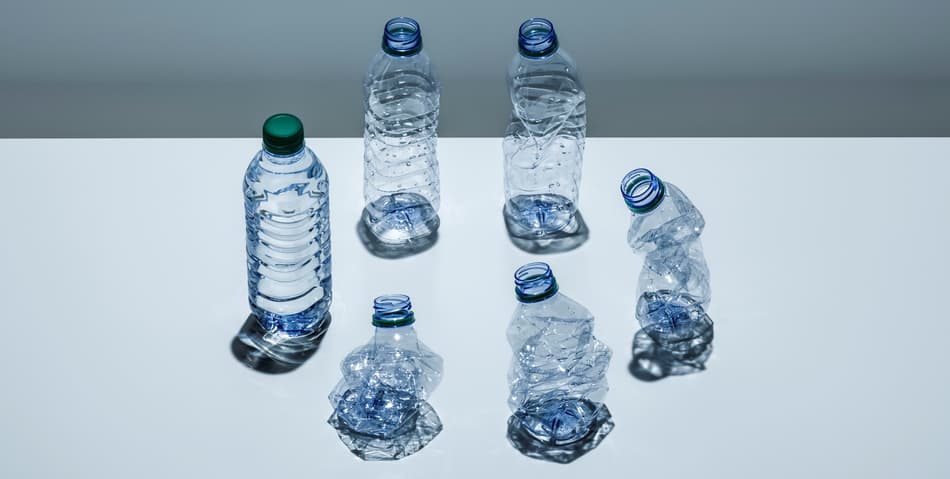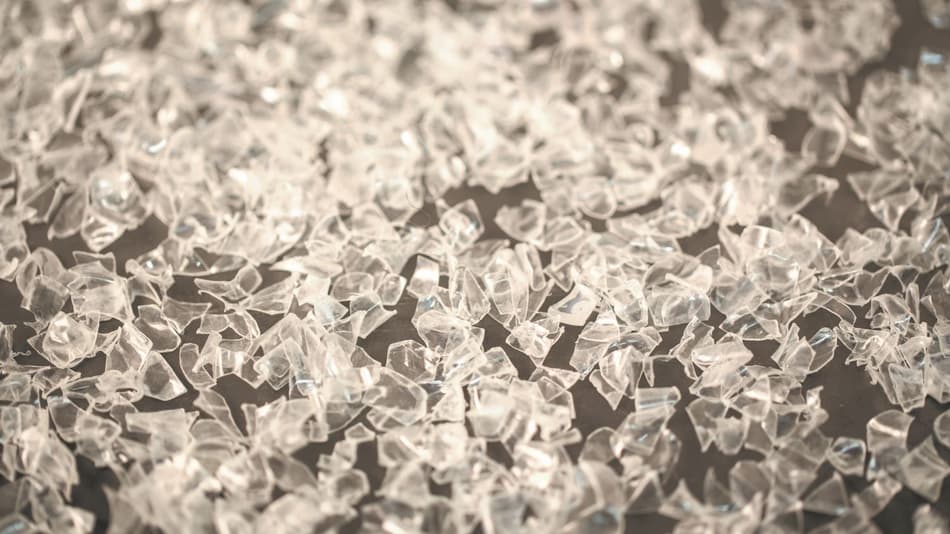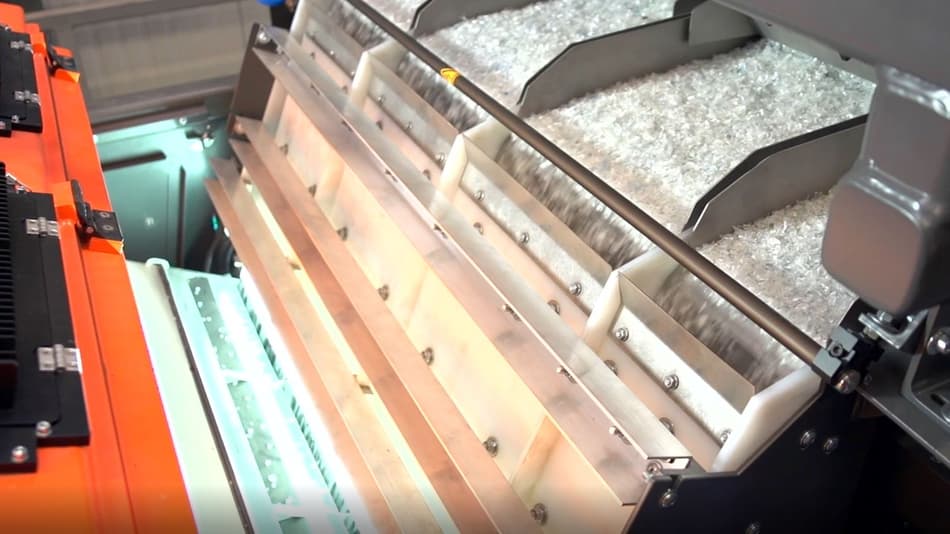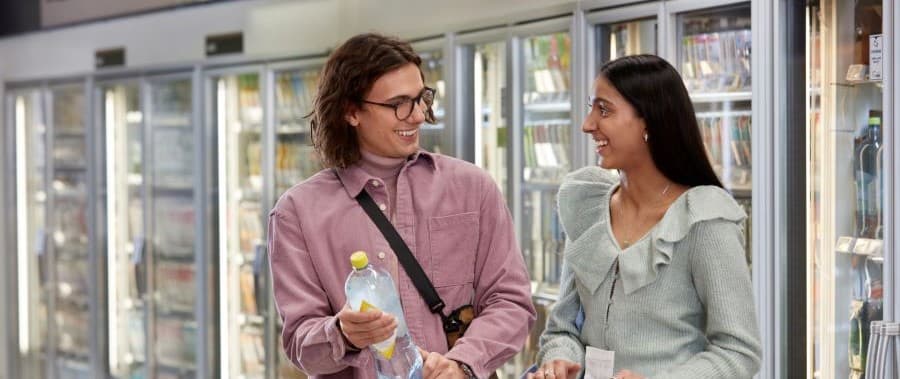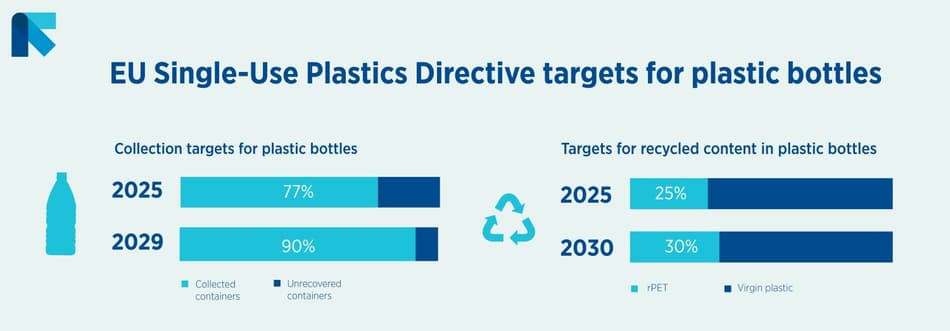rPET, on the other hand, is recycled PET. It is PET that has already been used at least once, recycled, and put back into use. As such, it represents a more sustainable replacement for the raw materials of virgin PET in the production of new beverage containers. Compared with virgin PET, rPET has a smaller carbon footprint and 79% fewer greenhouse emissions.
At a minimum, a single PET bottle can be recycled seven times, but the ability to decontaminate means this can be done ten or twenty times – maybe even more.
Rising demand for rPET plastic
Net demand for PET in the European Union (with its 27 member states) and UK was estimated at 5.1 million tons in 2020 – where 3 million tons came from virgin PET production, 0.8 million tons from imports, and 1.3 million tons from rPET production. Data shows a slight shift away from virgin production and imports, towards rPET production – with a 3.8% increase from rPET production, and a 2.7% fall in the supply virgin PET production.
Approximately 54% of all PET products are beverage bottles. An estimated 3.6 million tons of PET bottles were put on the market in the EU27+UK in 2020, an almost 6% increase compared to 2018.
Demand for food-grade rPET (that is, that the materials of the bottle will touch food or drink to be ingested) for bottle production is actually exceeding the supply. There would need to be an expansion in recycling capacity of this grade (such as through advanced mechanical recycling) as well as an increase in the supply of collected PET bottles of sufficient quality in order to feed this capacity.
Creating food-grade rPET plastic
If rPET is used to produce drink bottles, it's essential that it complies with the standards for food-grade contact. Here, strict standards and procedures cover every part of the process, from the handling of the PET bottles that are to be recycled, to the maintenance of the machinery that will grind and shred them ready to be turned into rPET.

